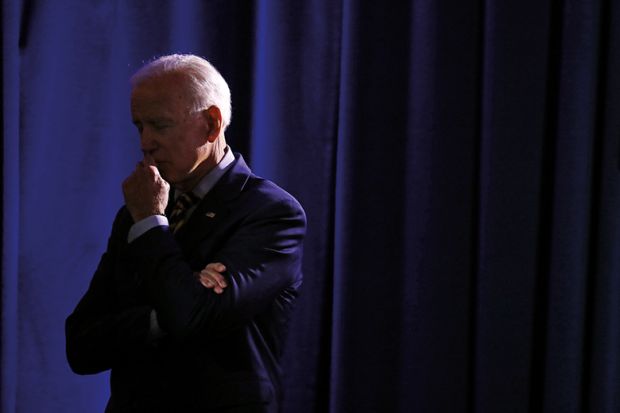After another angry and ugly year of national politics, US higher education enters November with a fairly clear preference for the outcome of next week’s election: a Democratic landslide.
Projections that Joe Biden will evict Donald Trump from the White House have academic leaders dreaming of greatly increased government aid, a more welcoming environment for foreign students, a far more competent approach to the coronavirus pandemic, and greater funding and trust for scientific research. A Biden win – especially combined with a Democrat-led Senate – could herald “a sea change for higher education”, says one leading expert, Anthony Carnevale of Georgetown University.
Carnevale, who is director of the Center on Education and the Workforce at the Washington DC institution, is particularly enthusiastic about Biden’s landmark promise of tuition-free college for all students from families earning less than $125,000 (£100,000) a year: a pledge that promises finally to address the US’ $1.5 trillion student debt crisis and growing concerns about the cost-effectiveness of a college education.
Even if victorious Democrats struggle for policy wins, the mere prospect of toning down the national drama associated with Donald Trump raises celebratory thoughts for many. “Any level of stability is going to be better for higher ed,” says Christopher Marsicano, an assistant professor of higher education at Davidson College.
How good, however, remains a very open question given the range and depth of problems confronting US higher education.
Even though enrolment declines this autumn appear relatively modest so far, US colleges and universities have suffered more than $120 billion in losses from the pandemic, while hopes of major bailouts are dwindling. The federal government has spent more than $2.5 trillion on its Covid-19 response, but higher education’s allocation only amounted to $14 billion. When it was announced in March, that sum was described by Terry Hartle, senior vice-president for government and public affairs at lobby group the American Council on Education, as “nowhere near the resources needed”. However, since then, Congress has been too politically divided to approve more bailout funding.
Nor is expanded student recruitment likely to be an option to plug the financial gap. The US unemployment rate is at least double its level prior to the pandemic, swelling the number of American families unable to afford tuition. Overseas students previously paid more than a quarter of all US tuition dollars despite accounting for less than half that proportion of enrolments, but even where Trump administration policies and rhetoric haven’t scared them away, Covid-related travel restrictions have made it nearly impossible for them to enter the US.
Meanwhile, state governments, which already cut higher education spending between 2008 and 2018 by an average of 13 per cent per student, are typically seeing Covid-19 shrink their tax collections this year, further limiting their room for manoeuvre. Jennifer Delaney, associate professor of higher education at the University of Illinois at Urbana-Champaign, sees conditions heading in the wrong direction. Her state’s Democratic governor, J. B. Pritzker, has told agencies to expect a cut of 5 per cent for the upcoming academic year and 10 per cent for the following one, she says. Any free college plan that required state contributions, therefore, is potentially dead in the water.
Even before the pandemic, the cuts in state funding, combined with a dip in the number of college-age young people, had put many US institutions in a difficult financial position, obliging them to trim faculty and staff, avoid low-income students and accept greater corporate input into their curricular decisions. An expert in state budgets, Delaney regards the nationwide financial damage inflicted by the pandemic as being so deep that any hope for major new aid to low-income students in the next year or two is likely misguided. Indeed, even under a Biden administration, most students will be lucky just to see their conditions not get any worse, she believes.
“Until we’re out of the pandemic crisis, I’m not sure we can hope for much beyond that,” she says. “If we end up with low-income students in the same position they are now, I think that’s a win.”
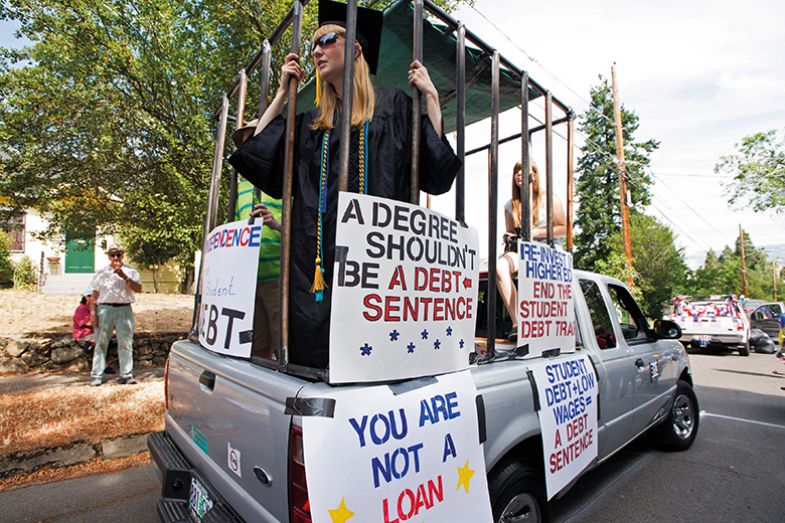
This election year began much more optimistically for higher education. Two leading contenders for the Democrats’ presidential nomination, Elizabeth Warren and Bernie Sanders, promised to make four-year college educations free for all if they became president. All other leading candidates pledged to cover at least two years of tuition for the neediest students.
Biden’s victory in the primary elections meant that free-college enthusiasts had to settle for a plan at the more modest end of the generosity spectrum – but, arguably, Biden’s moderation also gives the Democrats the best chance of winning the power to implement a debt-reduction plan. His proposal looks a lot closer to what’s politically realistic at this point, George Washington’s Carnevale concedes. Carnevale recently published research suggesting that US taxpayers would save money in the long term by adopting Biden’s plan, which would cover the first two years of tuition for all students and all four years for families earning less than $125,000 annually. The Biden plan would cost taxpayers nearly $700 billion over its first 11 years, but the cost would then begin to be outweighed by greater tax collections from more educated workers, Carnevale calculated.
Still, while Carnevale is far from alone in thinking the general direction of Biden’s tuition-free college plan is feasible, experts are wary of predicting the size or the mode of any proposal even if Democrats control both Congress and the White House.
One relatively simple approach, some suggest, would be to greatly expand eligibility for Pell Grants, the main federal tuition subsidy paid directly to low-income students and currently worth $6,345 a year. But most observers predict that Congress would expect states to contribute a considerable chunk of the cost of a Biden scheme. According to Wesley Whistle, an education policy adviser at the New America thinktank, a federal-state partnership done well could both rescue state budgets and provide some badly needed increases in free public tuition.
But there would be a lot of devil in the detail of such a plan. One concern is that Congress might devise a system that rewards states that have spent relatively little on higher education in the past by assigning them greater federal subsidy. Moreover, devising a plan is only part of the challenge, says Will Doyle, professor of higher education and public policy at Vanderbilt University. Some states, he warns, may just refuse such federal money for their colleges – either because they feel they can’t afford the matching funding or they don't like the political principle.
Doyle looks back to a similar situation a few years ago when the Obama administration offered federal money to help states provide healthcare to more of their citizens. Amid the nation’s hardening partisan divide, some states under Republican control simply refused the money. And while some of those states later relented, especially those where Democrats took power, the political climate is no better right now, Doyle says.
“I don’t think [the notion of a boycott] is occurring to a lot of people right now about the free college proposals,” he concedes. “But that’s what we saw [with healthcare]; a kind of generalised resistance to that agenda might come up.”
Partisanship was not always the barrier it currently is to expanding higher education funding. Jason Stanley, professor of philosophy at Yale University, cites the example of Thomas Kean, the Republican governor of New Jersey in the 1980s, who enthusiastically supported higher education and was appointed president of Drew University after he left office. His approach makes a striking contrast with that of a much more recent Republican state leader, Scott Walker, who governed Wisconsin for most of the past decade. Walker imposed sharp funding cuts at the University of Wisconsin and called for replacing the institution’s formal commitment to the “search for truth” with a goal of workforce preparation.
In essence, Walker “dismantled the University of Wisconsin, one of the great public universities of the world”, Stanley says. The Trump administration and its allies, he says, have been doing the same for the rest of US higher education: “We have the number one university system in the world, and this administration has been systematically taking it down.”
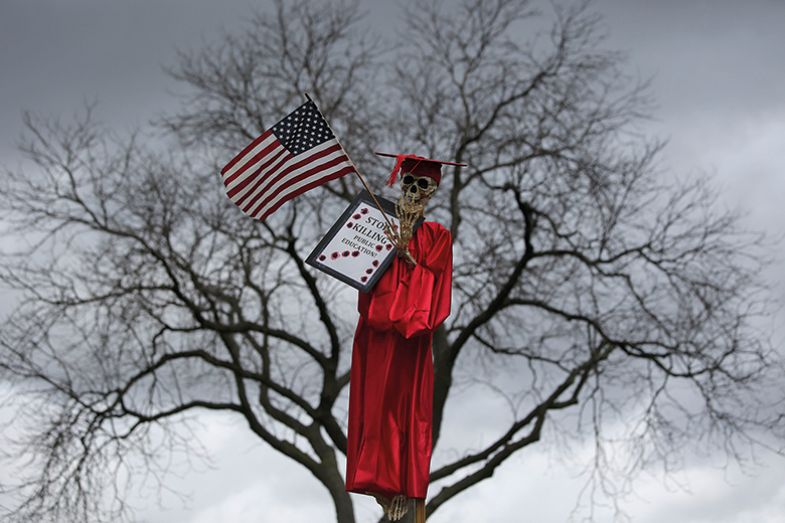
More than any immediate budget stress, that philosophy of “crude instrumentalism” – “the notion that higher education exists primarily to serve the short-term economic interests of society” – looms as the biggest overall threat to US higher education, says Stanley Katz, professor of public and international affairs at Princeton University.
Conservatives recognise the importance of that question about purpose, even if they take the opposite position on it. Neal McCluskey, an education analyst at the libertarian Cato Institute, believes that Democrats are too expansive in their view of higher education’s social role. Government-funded student aid policies, he insists, should take into account “who would benefit from going to college”, and he laments that, even in the midst of the student debt crisis, “very little assessment is made of prospective federal borrowers’ likelihood of completing college”.
Others see more of a middle ground, valuing job-related training while advocating for robust public investment to help students from all backgrounds participate. Georgia State University, for instance, is a pioneer among a small but growing group of institutions that aim to help minority students graduate and find jobs in technical fields by using advanced data analytics to closely monitor their progress.
That approach has proved especially important during the pandemic, when lower-income students are particularly stressed and vulnerable, says Georgia State’s senior vice-president for student success, Timothy Renick.
The university monitors its 34,000 students for changes in 800 risk factors a day related to their classroom performance, financial security and overall health, leading to tens of thousands of direct interventions as needed. Just by knowing its students so well, Renick says, Georgia State was able within 24 hours to distribute $22 million of the $24 million in federal bailout money it received earlier this year – without the students’ even needing to apply for it.
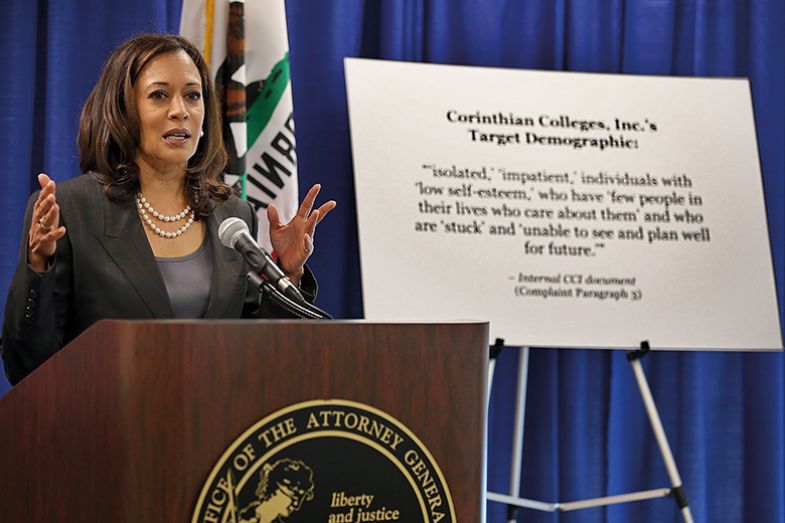
Budgets aren’t the only aspect of their operations in which many in US higher education hope to see benefits from a potential change of political power in Washington. For all the damage that Trump has done to relationships with foreign students, says Mary Papazian, the president of San Jose State University, things could yet get worse if he is re-elected.
One of the most frightening prospects, Papazian says, is Trump’s as-yet-unfulfilled threat to end Optional Practical Training, the programme that lets foreign college graduates work in the US for a time after they graduate. If Trump left office with OPT intact and Biden rebuilt normal visa-processing systems for students, it would bring significant relief for campuses with significant international enrolments, Papazian says.
“Starting with the travel ban [from several Muslim-majority countries] early on in Trump’s presidency, international students have been under constant threat,” Papazian says.
A Biden victory may also extinguish hopes among for-profit colleges for some level of meaningful revival. His vice-presidential choice, Kamala Harris (pictured above), earned a reputation while California’s attorney general for winning legal judgments against proprietary institutions for deceptive recruiting practices.
But Biden may disappoint some in higher education by leaving some hot-button topics alone. One is the taxing of large endowments, which was approved by Congress in 2017. That is widely seen as a problem for a few large institutions, but their complaints may not be generating enough public sympathy for Democrats to expend political capital on revisiting the issue.
Another area that Biden might shy away from is Trump’s recent overhaul of Obama-era rules for adjudicating sexual assault complaints involving students. The reform bent the standards in favour of those accused, but victims’ rights advocates might not have the political support to tip the balance back towards the victim, according to Princeton's Katz.
Meanwhile, an existing programme offering loan forgiveness to graduates who work in the public sector may expire regardless of who sits in the White House, Davidson’s Marsicano predicts. That’s because it has proved complicated, expensive and largely beneficial to future doctors and lawyers.
“The idea is popular, but the programme itself, as implemented, is not,” he says.
One of the most important gifts that the winning presidential candidate can bestow upon higher education, says Michael Crow, the president of Arizona State University, is basic competence in running the US government and economy.
Many economists have concluded that an annual economic growth rate of 4 per cent is necessary “to really sustain social mobility and to sustain social change”, Crow says. Yet the US hasn’t seen that level of growth in 20 years and hasn’t seen a sustained period of it since the 1960s, he says.
Other economists, however, have warned that the US is too aggressively pursuing economic growth, to the detriment of people and the environment. The latest annual report of the Social Progress Index shows that the US is among only three countries, of 163 rated worldwide, that are faring worse on its measures of human well-being since the project started in 2011.
Current examples of such failures include the US’ high Covid infection and death rates, which continued to escalate even as Trump – who himself became infected in October – pushed colleges and the rest of society to help revive economic activity by taking greater risks with in-person gatherings.
But US universities largely aligned with Trump on that issue, at least – especially those that can’t afford the potential financial losses associated with moving online (which may have been considerably higher had Trump followed through with his legally contested intention this summer to deport international students from any institution that switched its teaching to fully online). The result has been that students returning to their campuses this autumn have been associated with thousands of infections and likely hundreds of deaths in their surrounding communities.
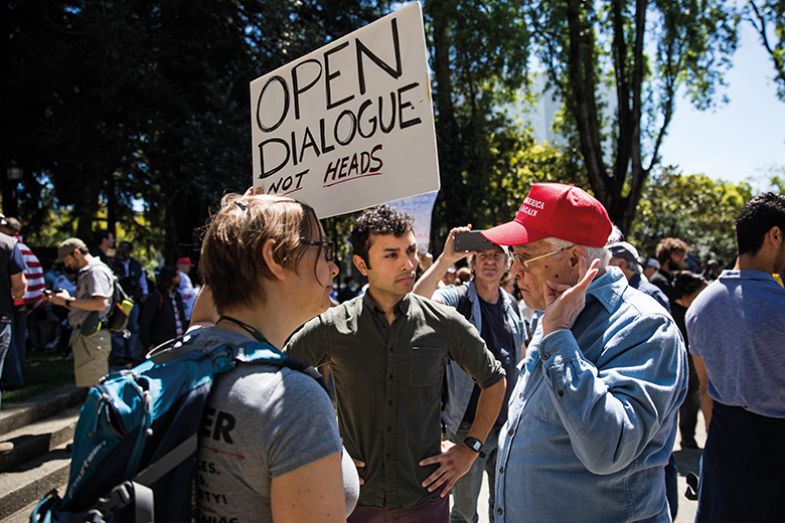
Whatever the election result, there is one issue that few in academia expect to disappear any time soon. That is the debilitating political tensions that escalated during the Trump administration and that contributed to a perception among many conservatives that higher education institutions are lined up against them in the culture war.
Federal elections records show that political donors with an academic affiliation have given five times as much money to Biden as to Trump. And among likely voters aged 18 to 29, Biden holds a 33-point lead over Trump, according to a poll run by the Harvard Institute of Politics in September.
There is already anxious talk among the relatively few university professors who openly identify themselves as Trump supporters about a feared Biden administration purge of their ranks – or, at least, severe censure for voicing their opinions.
Loss of free-speech rights, says H. Swint Friday, a professor of finance at Texas A&M University and prominent Trump backer, is the major risk of a Democrat-led government. He expects faculty to face a “lynch-mob mentality for any controversial statement or misstatement”. He also expects a rush to forgive student debt in a way that penalises students who chose more lucrative majors and who have therefore been able to repay their debts in full.
Daniel Bonevac, a professor of philosophy at University of Texas at Austin, agrees with Friday that a Biden win would mean “the virtual elimination of freedom of speech on college campuses”. In addition, he fears that “more restrictive anti-Covid policies advocated by the Democrats” will, among other things, force even more universities to resort to lower-quality online formats.
This kind of fretting over freedom of expression is of a piece with the administration’s own oft-repeated warnings. Trump and his allies have largely characterised calls to be respectful of racial and gender minorities as free-speech violations. In an address formally accepting the Republican party’s nomination for president, Trump decried “radical professors” and “speech codes designed to muzzle dissent”.
Such complaints are largely unfounded, Davidson’s Marsicano says, given that the US Constitution makes clear the boundaries of legal free expression. And Yale’s Stanley adds that far bigger threats to free speech are posed by Trump’s own criticisms of university courses that teach students about the damage caused by racism over the course of US history. The main goal of administration-led complaints about free speech in academia, he believes, “is to create a less-informed citizenry”, which will help populists such as Trump to stay in power.
Such a scenario might not transpire next week. But it seems clear that, win or lose, Trump’s presidency has exacerbated a set of cultural and economic trends that have put higher education firmly on the defensive. It also seems clear that any gains higher education institutions make under a Democratic administration could be swept away in four years’ time if the perception that universities are enemy territory to Republican voters can’t be stemmed.
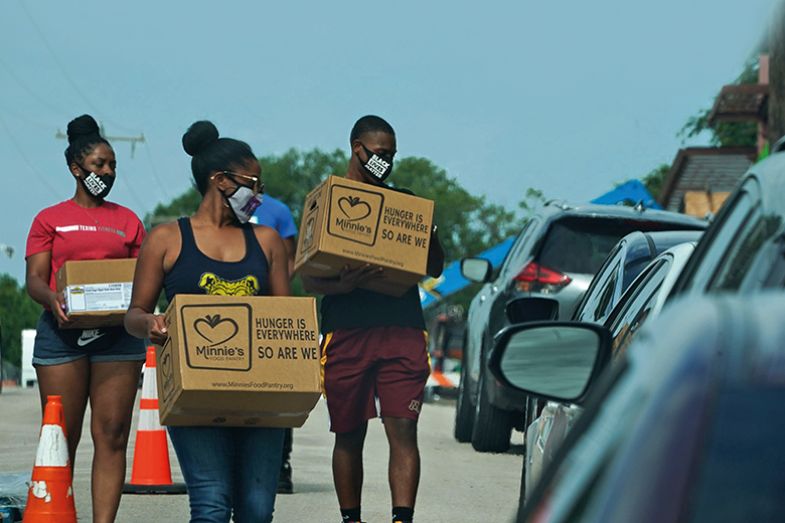 Source: Getty
Source: Getty

Mission drift or uplift?
Regardless of whether Trump or Biden wins, higher education must take a far more expansive view of its position in society, according to Jason Stanley, professor of philosophy at Yale University. Most university presidents, in his view, are focused on raising money and “just playing defence”, fearful of doing anything that would drag them into the nation’s toxic partisan swamp.
Too few, for instance, have clearly argued that higher education represents a broad societal benefit and fought against its political redefining as job preparation training, Stanley says. And too many have remained silent while critics demean the value of studying the humanities – especially in the areas of gender and racial inequities.
“Instead of providing economists [with material] to help justify whatever tax cuts and bank-friendly policies the Democrats and Republicans want to implement, universities could be aggressively addressing the inequalities that have led us to the brink of a demise of democracy,” Stanley says, suggesting that they teach about the dangers of mass incarceration, for instance, or establish programmes to teach and aid inmates.
Nor are altruism or respect for the constitution the only reason for making such efforts. Stanley is the author of the 2018 book How Fascism Works, which explains the dangers that can overcome societies once they start tolerating divisive politics. He warns that the broad failure of colleges to fight injustices outside their gates can come back to haunt them in terms of political attacks and funding cuts.
“Hopefully, university presidents have seen that universities are on the chopping block too when democracy is on the chopping block,” Stanley says.
Some university leaders have at least tried to ameliorate their local situations. One of them, Michael Sorrell, took over as president of Paul Quinn College in 2007, when the small, historically black Methodist institution in Dallas was nearing collapse. Sorrell gained renown in some corners of higher education for his decision to end the college’s football team and plough up its field to grow food for the local community. The college is now creating a wider food distribution network for low-income Dallas residents, giving away meals and masks to help people survive the pandemic.
It is also making plans to open two high schools on its campus: an idea that Stanley describes as brilliant given that so many colleges cite the lack of qualified minorities as the reason why they don’t enrol more of them.
Other peers, however, seem more resentful, even as US higher education outwardly embraces this year’s nationwide demands for greater awareness of the persecution of minorities. Speaking to a gathering of college admissions professionals, Sorrell described hearing chatter that he wouldn’t still be leading an institution with only 550 students if he truly was implementing innovative ideas.
However, Christopher Marsicano, an assistant professor of higher education at Davidson College and the founding director of the College Crisis Initiative at the North Carolina institution, points out that innovation is a lot easier at smaller institutions.
“Michael’s had many opportunities,” Marsicano says, “but I know why Michael hasn’t left: he’s never going to be able to enact the vision that he can enact at Paul Quinn at other places, because shared governance will never let him do it.”
Still, some large institutions are trying. They include Virginia Commonwealth University, an urban institution with about a third of its 30,000 students poor enough to be eligible for Pell Grants. Its social innovations include making generic drugs to replace expensive name-brand supplies, boosting production of protective medical equipment, and helping communities with such needs as food production and water sanitation.
“Higher education has got to find a way to move a lot faster at all of our levels,” says Michael Rao, the university’s president. And while he’s not sure about establishing high schools, Rao does agree that college-level teachers must be much better aligned with counterparts in elementary schools.
“I don’t know an exact model, but I do think there is a real need for us to be far more integrated as a network,” he says.
It is such radical thinking about social mission, Stanley believes, that will ultimately ensure both a thriving democracy and a thriving higher education sector, regardless of who wins this year's elections. The current generation of college leaders too often seeks to be “all things to all people”, he says. “And you can’t be all things to all people – you’ve got to look at the problems in the country and take an affirmative stand.”
后记
Print headline: Would a Biden presidency really solve US higher education’s woes?
